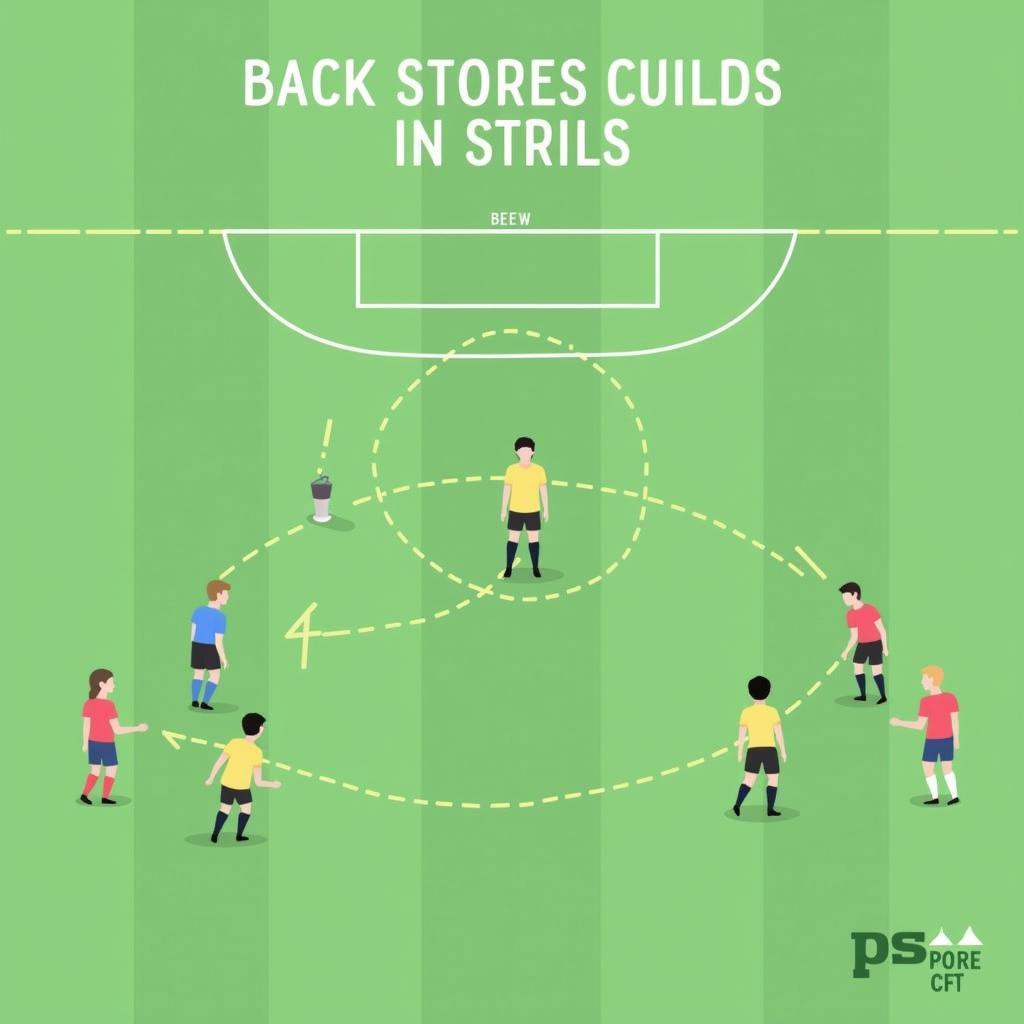The Myth of the Static Striker: Debunking “Players Who Don’t Make Runs”
January 18, 2025The idea of a “player who doesn’t make runs” is a contradiction in terms, especially at the highest level of football. While some strikers might seem less active than others, effective forward play always involves movement, even if it’s subtle. Let’s explore the nuances of striker movement and why even seemingly “static” players are constantly working to create opportunities.
Why Movement is Essential for Every Striker
A striker’s primary job is to score goals, and that rarely happens by standing still. Even players known for their physical presence and aerial prowess, like myself, rely on intelligent movement to create scoring chances. Movement creates space, disrupts defensive lines, and opens up passing lanes for teammates.
Different Types of Striker Movement
Movement isn’t just about sprinting towards goal. It encompasses a range of actions:
- Creating Space: A simple run away from the ball can drag a defender out of position, creating space for a teammate or opening a passing lane.
- Diagonal Runs: These are crucial for breaking down organized defenses, pulling defenders out of their shape and creating opportunities for through balls.
- Runs in Behind: Exploiting the space behind the defense is a classic striker’s move, requiring speed and timing to latch onto through passes.
- Dummy Runs: Sometimes, the most effective movement is not receiving the ball. A dummy run can draw defenders away, freeing up space for a teammate to make a run or receive a pass.
- Holding Up Play: Even when seemingly static, a striker can use their body to shield the ball, allowing teammates to advance and join the attack.
The “Static Striker” – A Misconception?
 Strategic Positioning of a Seemingly Static Striker
Strategic Positioning of a Seemingly Static Striker
Some strikers are labelled “static” because they don’t make constant, obvious runs. However, this often overlooks their subtle movements and positional awareness. These players might excel at:
- Positioning: They instinctively find pockets of space in the box, anticipating where the ball will land.
- Holding Up Play: Their strength allows them to receive the ball under pressure and bring teammates into the game.
- Clinical Finishing: They might not make as many runs, but they make their movements count, capitalizing on limited opportunities.
Even seemingly “static” players are constantly adjusting their position, reacting to the movement of the ball and their teammates. This subtle movement can be just as effective as explosive runs, particularly in crowded penalty areas.
Why the Perception of “Static” Play Exists
 Analyzing Striker Movement Patterns
Analyzing Striker Movement Patterns
The perception of a “static” striker can arise from several factors:
- Playing Style: Some teams prefer a more patient build-up, relying on precise passing rather than constant movement.
- Tactical Instructions: A striker might be instructed to hold their position to occupy defenders and create space for wingers.
- Fitness Levels: Fatigue can limit a player’s ability to make repeated runs, making them appear less active.
- Misinterpretation: Observers might focus on explosive runs and overlook the subtle movements and positional adjustments that are crucial for effective striker play.
Conclusion: Movement is Key, Even When Unseen
The notion of a “player who doesn’t make runs” is a simplification. Effective strikers, regardless of their style, are always moving, whether it’s making dynamic runs, finding pockets of space, or holding up play. Understanding the nuances of striker movement is crucial for appreciating the complexity of the game. Even seemingly static players are constantly working to create opportunities and contribute to their team’s success. Remember, intelligent movement is as important as speed and power in modern football.
FAQ
- What are some examples of effective striker movement?
- How do “static” strikers contribute to their team’s attack?
- How can I improve my movement as a striker?
- What are the tactical implications of different types of striker movement?
- How does a striker’s movement affect the positioning of other players?
- How can I analyze striker movement to improve my understanding of the game?
- What are some common misconceptions about striker movement?
Situations where movement is crucial:
- When your team is trying to break down a stubborn defence.
- When facing a high defensive line.
- In counter-attacking situations.
- During set pieces.
Further exploration on our website:
Check out our article on xu hướng tấn công của cầu thủ fo3 for more insights.
For support, contact us 24/7 at phone number: 0396443476, email: [email protected], or visit our address: 23 Tháng 3, Đắk Nia, Gia Nghĩa, Đắk Nông, Việt Nam.